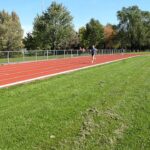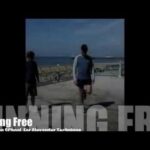Benefits and Research
The Alexander Technique attracts individuals wanting to improve mobility, ease postural discomfort, reduce chronic pain, and manage stress, while others seek lessons to advance their skills in the performing arts and athletic endeavours. Browse the menu lists below to learn more about how Alexander Technique can benefit you.
Use of resources
Please note that the content within the Research & Resources and Videos sections is provided only for general information purposes.
Use of Resources
Please note that the content within the Research & Resources is provided only for general information purposes. Many of the resources, such as books, are not free. Links to other websites or platforms are provided for viewers’ convenience, but ATC does not control or monitor them and accordingly cannot endorse their information or guarantee its accuracy and relevance. The use of content or links to third-party websites is at the viewers’ own risk. Viewers should contact an ATC-certified Alexander Technique teacher with any questions about the application of Alexander Technique to their specific issues.
Running
- Benefits
- Resources
- Videos
- Testimonials
The Alexander Technique is a method that addresses the posture that supports running, and, indeed, all movement, and is therefore an excellent technique for improving running form and avoiding injury.
Running begins, in all vertebrates, with a release of the head and lengthening of the spine.
However, runners have learned to work against themselves. They typically hunch or arch, effectively compressing their trunks and retracting their limbs. The retracted runner balls his hands into fists, lifts his feet by lifting his toes, lands on his heels, and has his shoulders lifted, causing his head to pull backwards and down upon his neck and spine.
In this retracted state, balance is hard work – the subtle work of the neck reflexes is impeded by the shortening of the large muscles between the shoulders and head (trapezius). His arms no longer swing easily from the shoulders, and his elbows and wrists remain fixed as he runs. The large muscles that cross his hips work over-time to compensate for the restricted movement of the head’s weight, which is essential for optimal functioning of the vestibular (balance) system.
The average coach can see the faults in the runner’s form, and tells him to move and position himself differently – “get your head over your shoulders, pull your shoulders back, drive your knees forward” – all actions that require increased effort as a means to resist the unconscious effort that is causing the poor posture to begin with. These instructions or exercises to strengthen muscles to do the work required to struggle against poor posture may briefly appear to bear fruit. But, as Alexander repeatedly noted, “sometimes, when you are getting better, you are actually getting worse,” meaning that these short-term solutions lead to more serious problems later on: pulling back the shoulders that you are contracting forward or pulling back a head that is thrust forward winds up adding compression to the joints, and makes all movement more effortful.
This is where the Alexander Technique comes in. With gentle hands-on work, an Alexander Technique teacher brings a student’s awareness to his fluid joints and guides the student to permit freedom and movement. The repeated experience of hands-on guidance increases the student’s awareness of himself and teaches him to remove retraction and fixity from neutral posture. He may then learn to initiate movement without preparatory hardening and retraction. Hands-on private lessons are essential, because habitual preparation as one prepares for movement is very difficult to inhibit, and movement initiation by a teacher removes responsibility for the beginning of movement, making it easier for the student to allow himself to move without preparation.
Good posture in running is dynamic, a condition in which all muscles are lightly active, from which all movement may be accomplished without any preparatory hardening or stabilizing. (Written by Lawrence Smith.)
Alexander is a must for all competing athletes.
– Percy Cerutty, Australian Track-and-Field Coach (he coached John Landy, who became famous for racing England’s Roger Bannister)
I was able to rehabilitate my running after 25 years of being unable to run through injuries, to the extent that I was able to set 10 world records for veterans in 1982
– Paul Collins, Canadian National Marathon Champion







